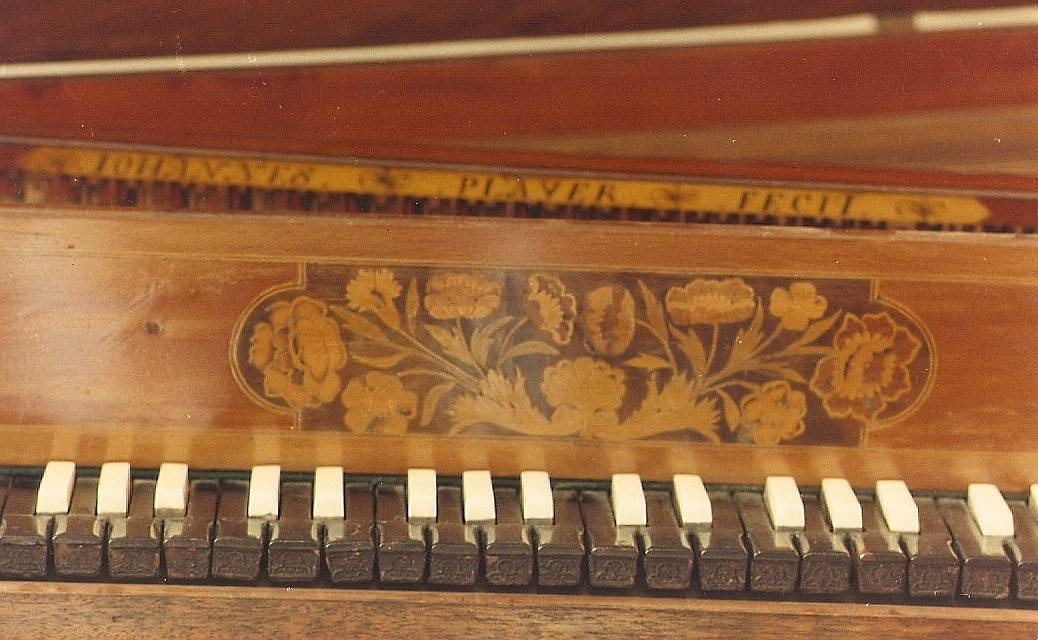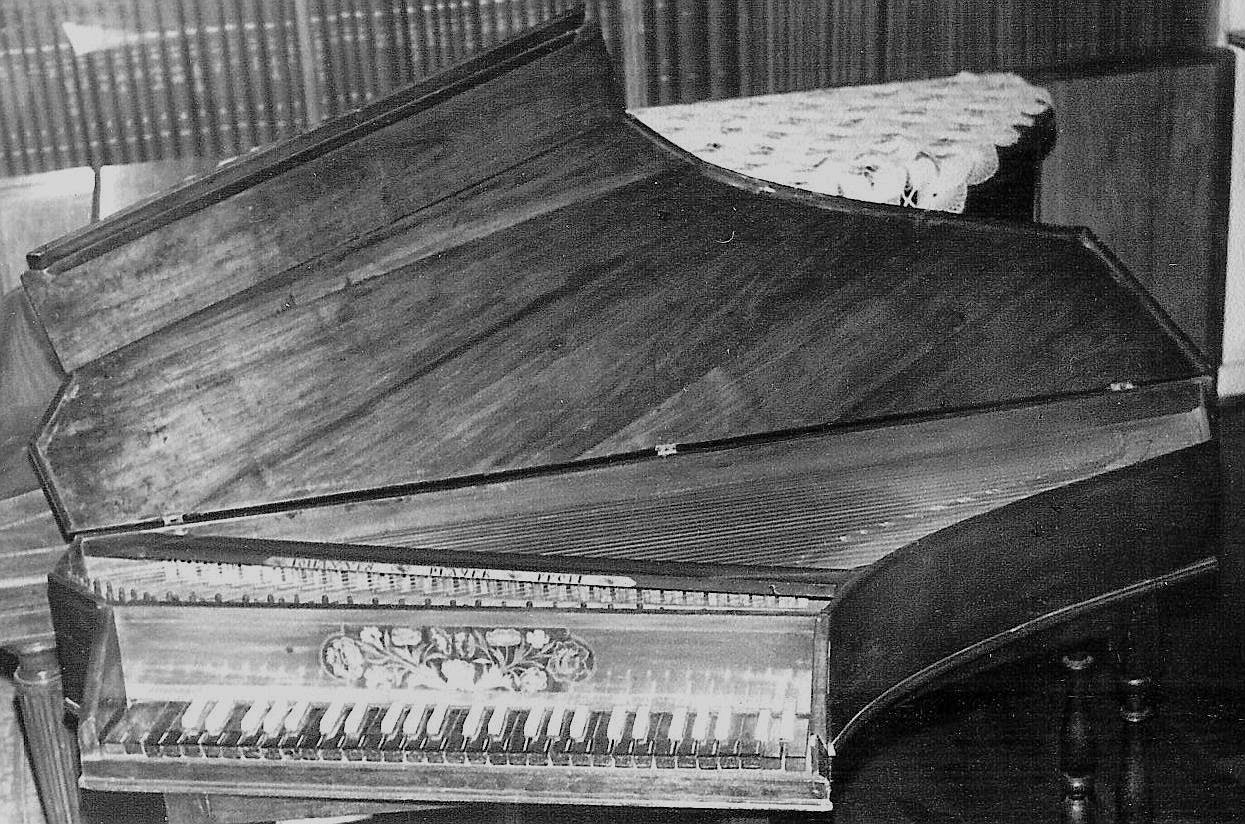Johanness Player Spinet 1741.
John Player was a virginal, spinet and harpsichord maker in London. Born c 1634, he became a freeman and later master of the Joiners' Company, and died probably in the first decade of the 18th century. On trestles, bought from Sotheby's, 1966. Note the fine name-plate inset Johannes Player fecit, four and a half octave span, two of the bass notes halved to allow for quarter-tones. The London craftsman John Player was known to have experimented with quarter-tone keys. [This discovery was lost for hundreds of years, until quite recently when a quarter-tone piano was hailed as a "modern" discovery, Pretoria News, 10.3.69] Only four other of his instruments have so far been traced. One is in the Victoria and Albert Museum, another in Washington. The spinet here, beautifully inlaid with carnation and tulip design, already has in miniature the shape of grand pianos to come. (RDM, 27.9.66)
Information from Boalch: 11 listed This instrument is probably the one on p. 121 listed as number 8, sold by Sotheby, 4.7.1966
Type: Wing spinet
signed on jackrail: Johannes Payer fecit, exterior of case, plain wood, length 1511 mm
Nameboard inlaid with tulips and carnations
issuing from foliate cornucopias.
Compass is lacking GG# and AA# but having split C# and D# in octave
above. Arcaded naturals. Walnut case.
Sold at Sotheby's in 1966




It seems very likely that the description of this spinet's split keys in its lowest octave actually conflates two distinct though superficially similar-appearing practices.
ReplyDeleteBroken-octave (or the similar short-octave) keyboards used a mixture of reassigned pitches and split sharp keys to provide the bass notes that would be required in a given piece. This allowed construction of a slightly smaller instrument than would be needed to accommodate a fully chromatic bass octave. Typical tuning might be E playing C, the front half of the F♯key playing D; the (less accessible) rear half of the F# actually played F♯. The front half of the G♯ key would play E, and the rear half, G♯. Individual notes could be retuned as needed for particular pieces.
On the other hand, dedicated keys for quarter tones were associated with the sixteenth- and seventeenth-century cimbalo cromatico, which also used split keys but typically had sixteen to nineteen notes (i.e. keys, jacks, and strings) per octave throughout its compass. The split keys are typically d-sharp/e-flat, g-sharp/a-flat and sometimes a-sharp/b-flat. Split keys for all accidentals yields 17 notes per octave. If e-sharp/f-flat and b-sharp/c-flat are added 19 notes per octave are required. There were even instruments proposed that would have had 24 notes per octave. These instruments were built to provide the enharmonic pitches ("quarter tones") that would be necessary to modulate comfortably using mean tone tuning.
One way to think of the difference between these two systems is economic: broken octave is a way to save labor, space, and money – as would befit a domestic instrument like a spinet. The cimbalo cromatico on the other hand is a sort of extravagance, cutting no corners: it requires more-than-usual materials and labor to construct as well as additional time invested in tuning and maintenance. - Rob Turner
John Player was a virginal, spinet and harpsichord maker in London. Born c 1634, he became a freeman and later master of the Joiners' Company, and died probably in the first decade of the 18th century. 4ocean bracelet wholesale france , 4ocean bracelet wholesale uk
ReplyDelete